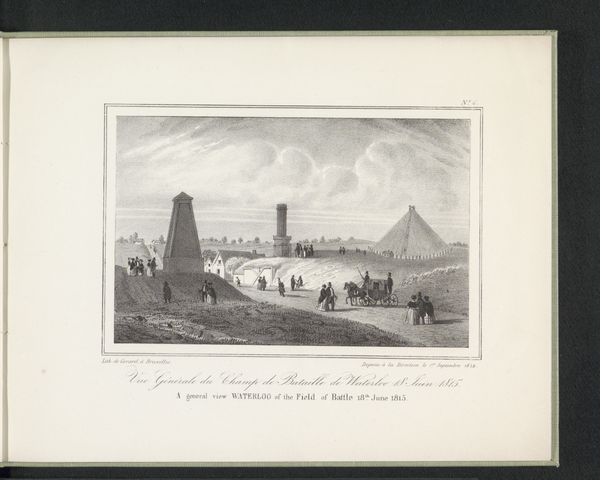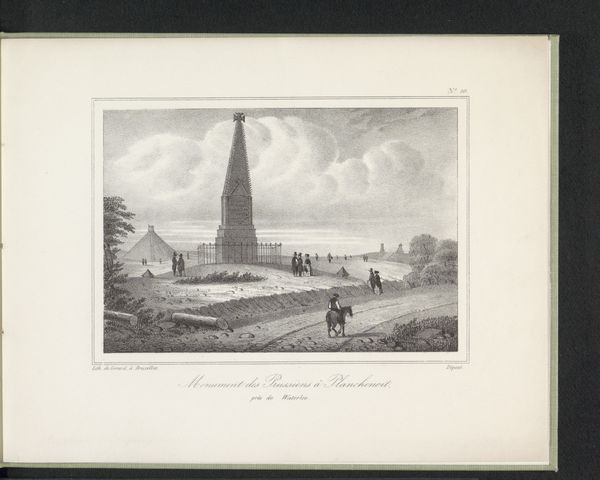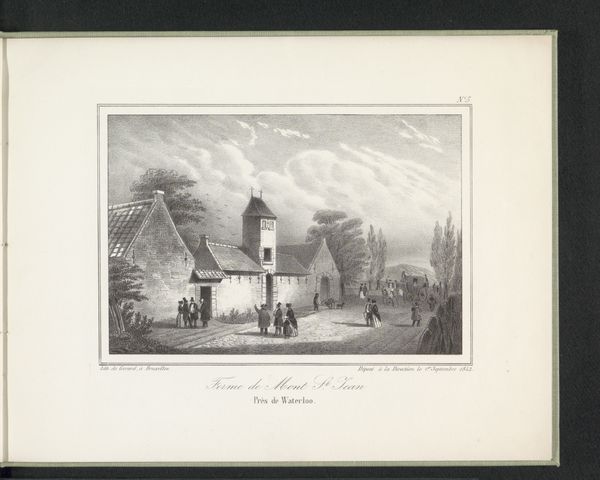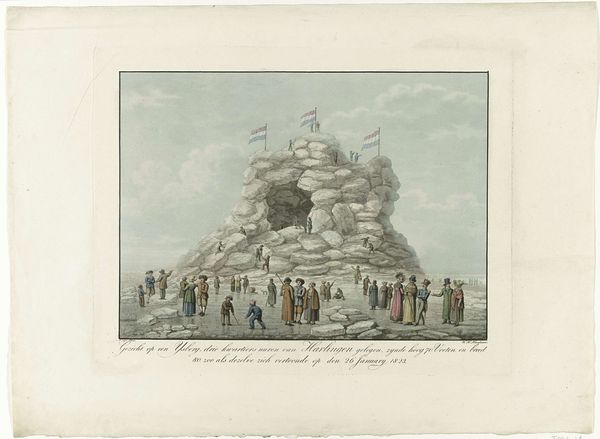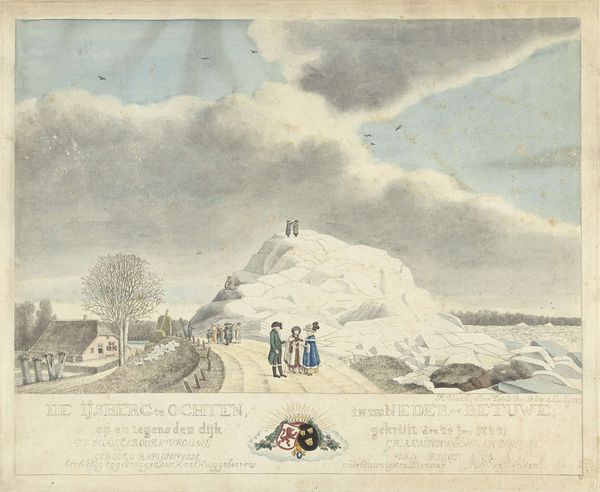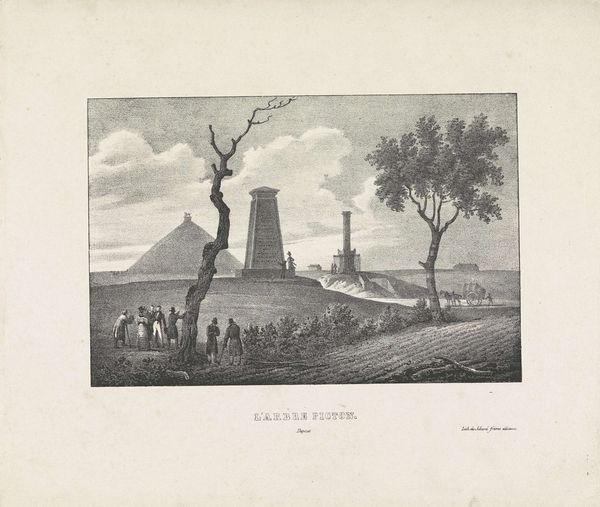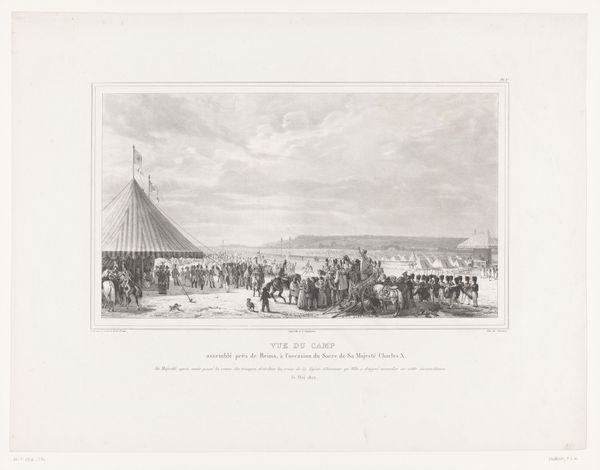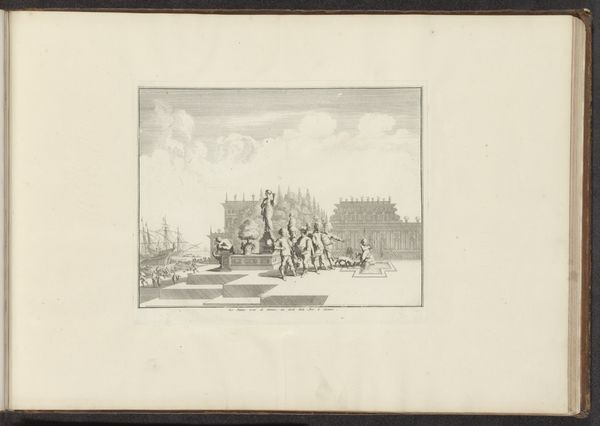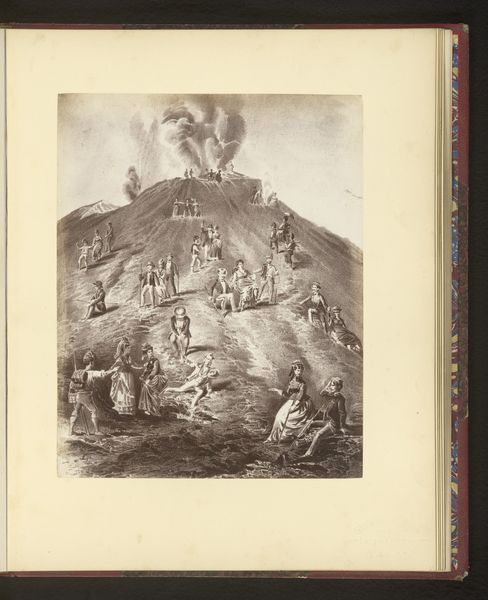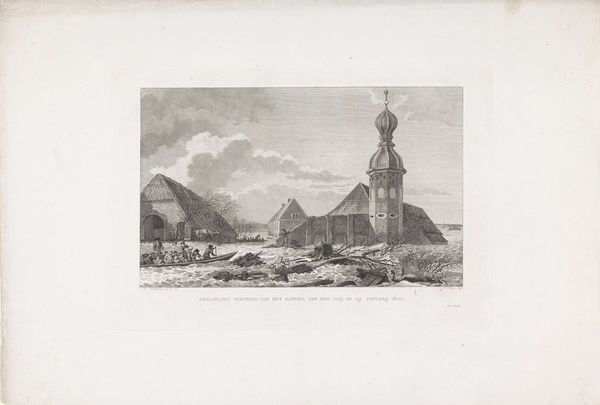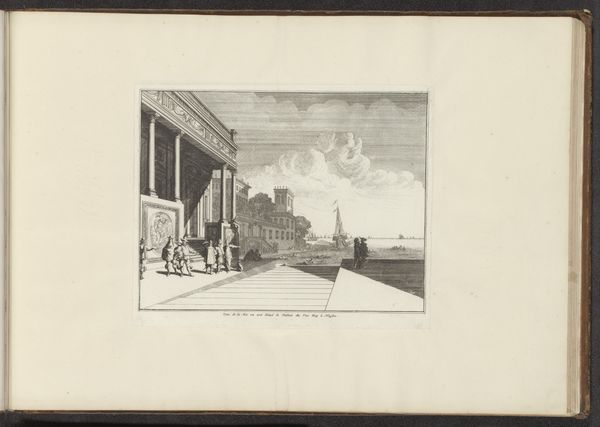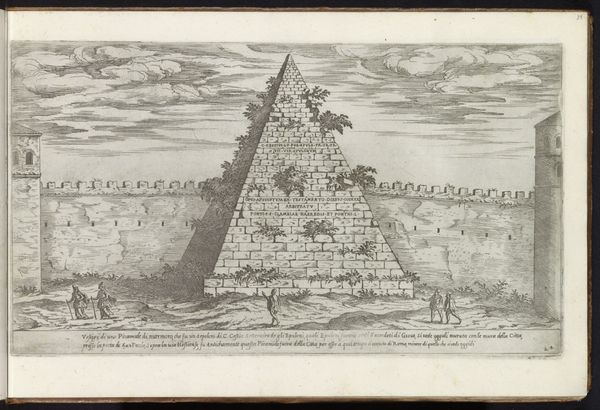
print, engraving
#
neoclacissism
# print
#
landscape
#
engraving
Dimensions: height 225 mm, width 290 mm
Copyright: Rijks Museum: Open Domain
Curator: Here we have H. Gérard’s “Leeuw van Waterloo,” or “Lion of Waterloo,” an engraving dating to 1842. What’s your first take on it? Editor: It strikes me as quite monolithic, doesn't it? The imposing, symmetrical structure against that lightly rendered sky projects an overwhelming sense of permanence, almost…arrogance. Curator: That might have been the point, in some sense. Consider its historical placement. Erected nearly two decades after the Battle of Waterloo, the artificial mountain commemorates the location where William II, the Prince of Orange, was wounded. It embodies aspects of neoclassical ideals but feels rather unlike them too. Editor: So, a deliberate attempt to solidify power and legacy? I'm immediately interested in the symbolic weight of the lion, which is situated so far away on top. Given that animals in art can often serve as powerful political metaphors, what might it suggest here? Curator: Well, traditionally the lion is of course an emblem of courage and strength. In heraldic terms, it signifies royalty, valor. Positioned atop the mound, it surveys the surrounding landscape, claiming dominion. Look at how the pyramid structure anchors the lion. It reinforces these ideas and suggests the stability of power that the state hopes to project. Editor: But wouldn't you say there's an underlying tension at play? The tiny figures at the base seem dwarfed. Isn’t there also a contradiction in creating an artificial monument to remember a war, a supposed victory paid for by suffering and death? How does this image invite us to think about memory and representation, even propaganda? Curator: You raise a fair point. While Gérard's engraving certainly emphasizes strength and monumentality through meticulous detail and geometric form, the surrounding landscape—the distant horizon, the tiny human figures—introduces a sense of perspective and scale that questions the narrative of unquestionable victory. The visual language seems both declarative and strangely undermined. Editor: Precisely! Thank you, that helped put my ideas in context. The conversation we've just had, thinking through how these two concepts can oppose or balance each other is truly why the arts remain thought-provoking. Curator: Yes. It makes one consider the complex nature of historical memory, especially when rendered through art. The choices artists make, even in apparently straightforward commemorative pieces, invite further consideration.
Comments
No comments
Be the first to comment and join the conversation on the ultimate creative platform.
